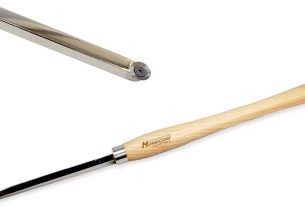Are you planning to embark on a road trip soon? If so, it’s important to ensure that your vehicle is in tip-top shape before hitting the open road. One of the most crucial aspects of safe travels is performing a pre-trip inspection using the right tool. This guide will provide you with all the essential information you need to know about pre-trip inspection tools.
What is a Pre-Trip Inspection Tool?
A pre-trip inspection tool is a type of equipment used by drivers to assess their vehicle’s condition before setting out on a journey. The tool comprises various components designed to identify potential problems such as tire wear, fluid leaks, and faulty brakes.
Why is a Pre-Trip Inspection Tool Important?
Performing a pre-trip inspection using the right tool helps prevent accidents caused by mechanical failures or malfunctions. It also ensures that your vehicle stays in good condition throughout your journey, minimizing breakdowns and costly repairs. Additionally, knowing what to check during an inspection can save you time and stress during an emergency.
Types of Pre-Trip Inspection Tools
There are several types of pre-trip inspection tools available in the market today. Each tool serves a specific purpose and helps detect different issues. Some of the most common types include:
1. Tire Pressure Gauge
This tool measures the air pressure level in each tire. It’s essential to maintain proper tire pressure because underinflated or overinflated tires can cause uneven wear, reduced fuel efficiency, and handling problems.
2. Fluid Level Checker
The fluid level checker helps determine if there’s enough oil, transmission fluid, brake fluid, coolant, or power steering fluid in the respective reservoirs. Insufficient fluids can cause engine damage or failure.
3. Brake Pad Thickness Gauge
The brake pad thickness gauge measures how much material is left on your brake pads. Worn-out brake pads can cause longer stopping distances, reduced braking power, and brake failure.
4. Battery Tester
The battery tester checks the voltage level of your battery. A weak battery can cause starting problems or leave you stranded.
5. Inspection Mirror
The inspection mirror helps examine hard-to-reach areas such as under the hood or beneath the vehicle for leaks, cracks, or damage.
How to Use a Pre-Trip Inspection Tool
Using a pre-trip inspection tool requires some basic knowledge and skills. Here’s a step-by-step guide on how to perform a pre-trip inspection:
1. Park your vehicle on a level surface and turn off the engine.
2. Open the hood and secure it with the prop rod.
3. Check the engine oil level using the dipstick.
4. Inspect the air filter for dirt or damage.
5. Look for signs of wear or damage on the belts and hoses.
6. Check the coolant level and condition.
7. Inspect the brake fluid level and color.
8. Measure tire pressure using a tire pressure gauge.
9. Examine tire treads for wear or damage.
10. Test all lights, turn signals, and brakes for proper functioning.
11. Check windshield wipers and washer fluid levels.
12. Verify that all windows are clear of obstructions and mirrors are adjusted correctly.
13. Look for any leaks or damage underneath the vehicle using an inspection mirror.
14. Start the engine and listen for any unusual noises or vibrations.
15. Confirm that all gauges and warning lights work correctly.
16. Perform a test drive to check acceleration, steering, braking, and handling.
Remember to document any issues found during your pre-trip inspection and address them before embarking on your journey.
Conclusion
Performing a pre-trip inspection using the right tool is crucial for safe travels and vehicle longevity. By following the steps outlined in this guide, you can easily identify potential issues and prevent accidents or breakdowns. Remember to use the appropriate pre-trip inspection tool for each component of your vehicle and document any problems found. With these tips in mind, you can enjoy a stress-free and enjoyable road trip.
References:
1. https://www.nhtsa.gov/vehicle-safety-recalls-and-service-bulletins/pre-trip-inspection-checklist
2. https://www.fmcsa.dot.gov/safety/driver-safety/cmv-driving-tips-pre-trip-inspection
3. https://www.tirebuyer.com/education/how-to-perform-a-pre-trip-vehicle-inspection




